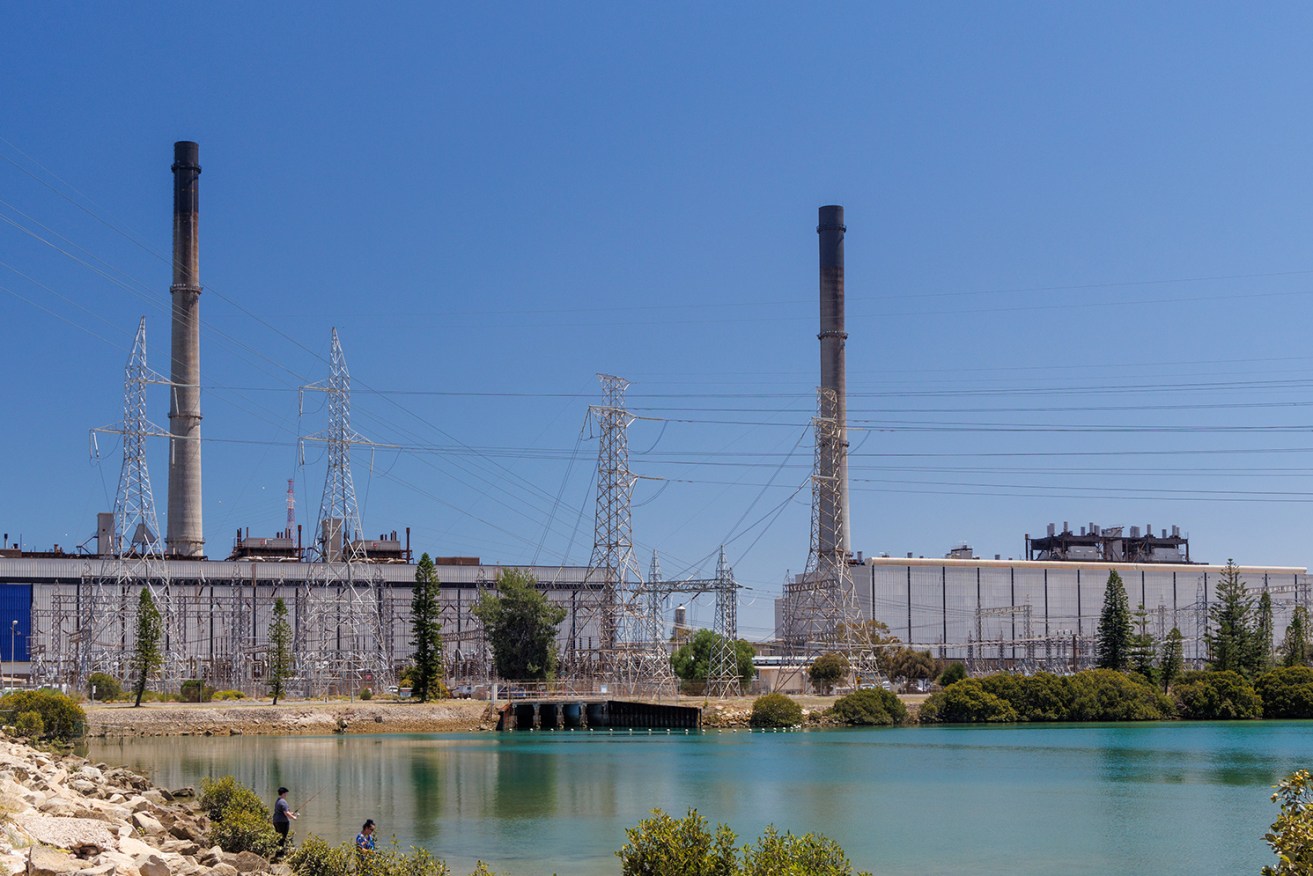Torrens Island power station to close in 2026
AGL Energy will bring forward the shutdown of Adelaide’s Torrens Island gas-fired power station by nearly a decade, partly due to concerns about the plant’s “economic viability” due to the planned SA-NSW electricity interconnector.


Torrens Island power station. Photo: Tony Lewis/InDaily
Australia’s largest energy generator announced on the ASX this morning that the Torrens Island ‘B’ Power Station near Port Adelaide would cease operations on June 30, 2026.
The gas-fired plant, opened in 1976, was previously expected to be operational until 2035.
AGL last October mothballed one of four 200MW ‘B’ units at the 800MW power station, with today’s announcement bringing forward the closure date for the remaining three units.
The company has been gradually reducing its gas-fired electricity production at the site as it moves to transform Torrens Island into a renewable energy hub.
AGL’s announcement today did not directly address how AGL’s more than 100 workers on Torrens Island would be affected.
“AGL is strongly committed to working with its people, in conjunction with unions and government, to help transition and further develop the skills and capabilities required for new and existing energy industries as Australia’s energy system transitions to a low-carbon future,” the company told the ASX.
“Torrens Island will continue to play a crucial role in AGL’s current energy requirements and future generation plans as the site is transformed into an integrated industrial energy hub, with the potential to drive new investment, create new job opportunities as well as the expansion into new markets including hydrogen and green energy.”
AGL chief operating officer Markus Brokhof later told reporters that 120 workers will be affected by the closure.
He said it was “too early to say” how many redundancies will result but AGL will be providing “re-training and re-education”
“I think it’s very clear that we want to transition – the jobs of today are not the jobs of tomorrow,” he told reporters.
“We will make sure there is not only a proper energy transition but also a proper transition of our workforce.
“We have to see now in the upcoming months and years what kind of jobs we can keep, what kind of redundancies we have here on the site.”
AGL said the decision to close the power station followed “careful consideration and extensive consultation with stakeholders”, including the state government.
The company also partly attributed the station’s closure to the construction of a $2.4 billion electricity interconnector between South Australia and New South Wales.
The interconnector was a key part of the former Marshall Government’s energy policy and will allow the state to export excess renewable energy to New South Wales.
“This [closure decision] has been driven in part by the planned completion of the Project Energy Connect interconnector between South Australia and New South Wales in mid-2026, which will further impact gas-fired generation in South Australia and as a result the economic viability of the power station,” AGL told the ASX.
Energy Minister Tom Koutsantonis – who amid last week’s storm blackouts highlighted the importance of constructing the interconnector with New South Wales to build “resilience” into the energy system – today took aim at the Marshall Government for backing the $2.4 billion project.
“This is what we warned about, when you build an interconnector into New South Wales you will displace South Australian thermal generation,” he told ABC Radio Adelaide.
“This is a direct consequence of the previous government’s plans to build interconnection into New South Wales.
“It was in their business case that they submitted, they funded this new interconnector, and the interconnector has claimed its first victim which is the AGL Torrens Island Power Station.”
The Minister later added that “this is not necessarily a bad thing, we’ll have enough power to supply ourselves, and it won’t be closing for another four years”.
“But what it does show is that when you interconnect with larger jurisdictions, you displace all your own thermal capacity,” he said.
“And when you displace your own thermal capacity, you are then reliant on what generation you can produce from renewables and storage in your own state.”
Opposition energy spokesperson Stephen Patterson defended the former Marshall Government’s investment in the project.
“Torrens Island served us well, but it uses outdated technology and was always going to be closed – that’s why the former Liberal Government planned ahead and backed the NSW interconnector,” he said in a statement.
“The interconnector will drive down energy prices for South Australian families and businesses and create thousands of new jobs – it’s a no-brainer when it comes to reliable electricity.”
Patterson claimed it was “unbelievable that Tom Koutsantonis doesn’t want to see this project go ahead just a week after South Australia was hit by blackouts and islanded”.
AGL is currently undertaking a feasibility study into building a green hydrogen facility at Torrens Island.
AGL COO Brokhof said the power station will be demolished following the closure.
Koutsantonis said he understood AGL would soon make some “dramatic announcements” about renewable energy technology on Torrens Island “which may be able to soak up a lot of those job losses”.




